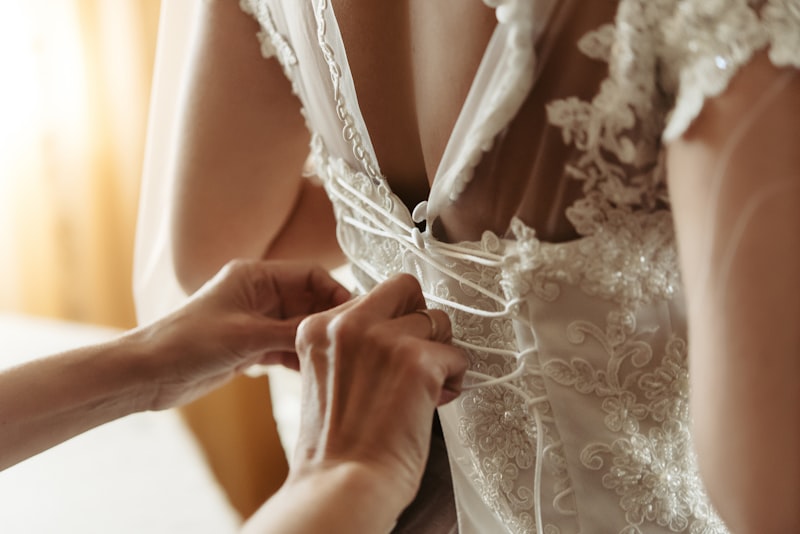The Importance of Fit in Bridal Dress Production
The Importance of Fit in Bridal Dress Production
When it comes to bridal dress production, the significance of fit cannot be underestimated. The perfect wedding dress is not just about the visual appeal; it's equally about how well the dress fits and complements the bride's figure. The right fit can enhance confidence and ensure that the bride feels beautiful on one of the most important days of her life. In this article, we will explore the critical role that fit plays in bridal dress production, along with tips and considerations for achieving that ideal fit.
Understanding the Concept of Fit
Fit refers to how a garment conforms to the body's dimensions, which can vary significantly from one individual to another. The perfect fit in bridal dress production goes beyond mere measurements; it requires an understanding of body shapes, garment construction, and fabric behavior. Here are some key factors that contribute to the importance of fit:
1. Body Shapes and Types
Brides come in all shapes and sizes, and recognizing this diversity is essential in bridal dress production. There are several common body types, including:
- A-line
- Hourglass
- Pear-shaped
- Apple-shaped
- Straight/Rectangle
Each body type has its own characteristics, and the fit of the dress should be tailored accordingly to create a harmonious silhouette.
2. Fabric Choices and Fit
The type of fabric used in a bridal dress significantly affects how the dress fits. More structured fabrics can hold their shape better, while lighter, flowing fabrics may drape differently on the body. It's crucial for designers and seamstresses to consider the characteristics of each fabric when planning for fit. For instance, bridal satin offers a different drape compared to chiffon, which can influence how the dress sits on the bride's body.

To illustrate how fabric impacts fit, consider this example:
| Fabric Type | Fit Characteristics |
| Silk Satin | Structured, form-fitting, drapes beautifully |
| Chiffon | Soft, flowy, may require additional support for structure |
| Lace | Can be delicate and requires precision in fit adjustments |
Crafting the Ideal Fit in Bridal Dress Production
Achieving the perfect fit in bridal dress production involves several stages. Below are essential steps to consider:
3. Accurate Measurements
The foundation of a well-fitting bridal dress begins with accurate measurements. Brides should visit professional bridal boutiques or seamstresses who can take detailed measurements. Common measurements include:
- Bust
- Waist
- Hip
- Shoulder width
- Back length
- Dress length
4. Customization and Alterations
Even with accurate measurements, it is rare for a wedding dress to fit perfectly off the rack. Customization and alterations are crucial elements in bridal dress production. Brides should allow for several fittings before the big day to ensure the dress is adjusted to perfection. This may involve:
- Taking in or letting out seams
- Adjusting hemlines
- Adding bust support
- Modifying strap lengths
5. The Role of Technology
In recent years, technology has played an increasingly vital role in the production of bridal dresses. Techniques such as 3D body scanning and digital pattern making can create personalized dress patterns that cater to individual body contours. This innovation can dramatically enhance the fit of bridal dresses, ensuring a tailored experience for each bride.
Common Concerns Regarding Fit
Brides often have concerns when it comes to the fit of their wedding dress. Here are some common questions:
- How can I ensure the dress will fit on my wedding day?
- What should I do if I lose weight before the wedding?
- Can I make drastic changes to a pre-made dress?
- What types of support garments should I consider?
Addressing Common Concerns
To address these concerns:
- Schedule at least two fittings, one close to the wedding date.
- Discuss weight changes with your seamstress; they can make alterations accordingly.
- Consult with professionals about the extent of modifications possible for pre-made dresses.
- Consider the type of undergarments you will wear, as they can significantly affect fit.
Conclusion
In conclusion, the importance of fit in bridal dress production is paramount. A well-fitting dress not only enhances a bride's confidence but also ensures she looks her best on her special day. By understanding body shapes, choosing the right fabrics, and prioritizing customization and alteration, every bride can achieve that perfect fit. Remember to focus on accurate measurements and allow adequate time for adjustments leading up to the wedding. With the right preparation, brides can feel stunning and comfortable in their wedding attire, making their day truly unforgettable.
As you embark on your journey to find the perfect bridal dress, keep in mind the essential aspects of fit to create a breathtakingly beautiful look that celebrates the essence of who you are.
